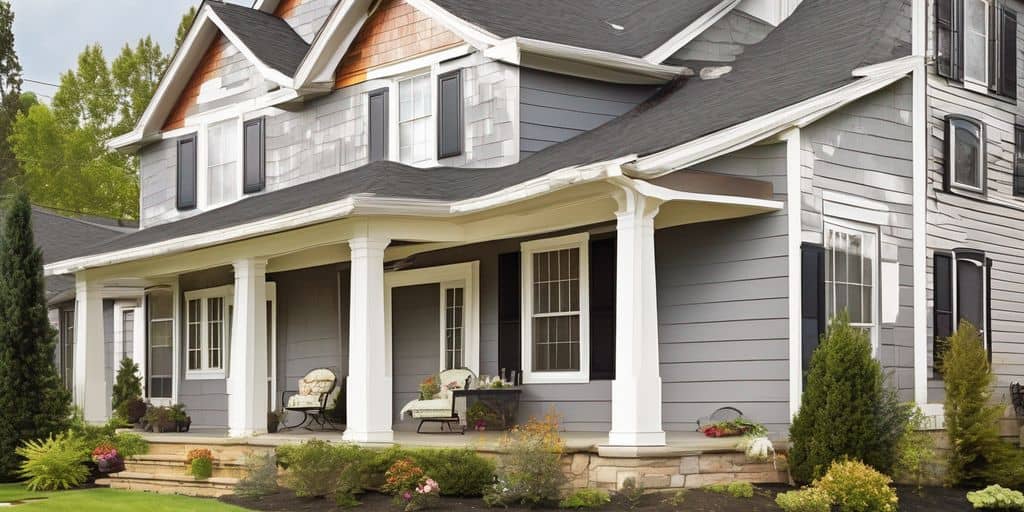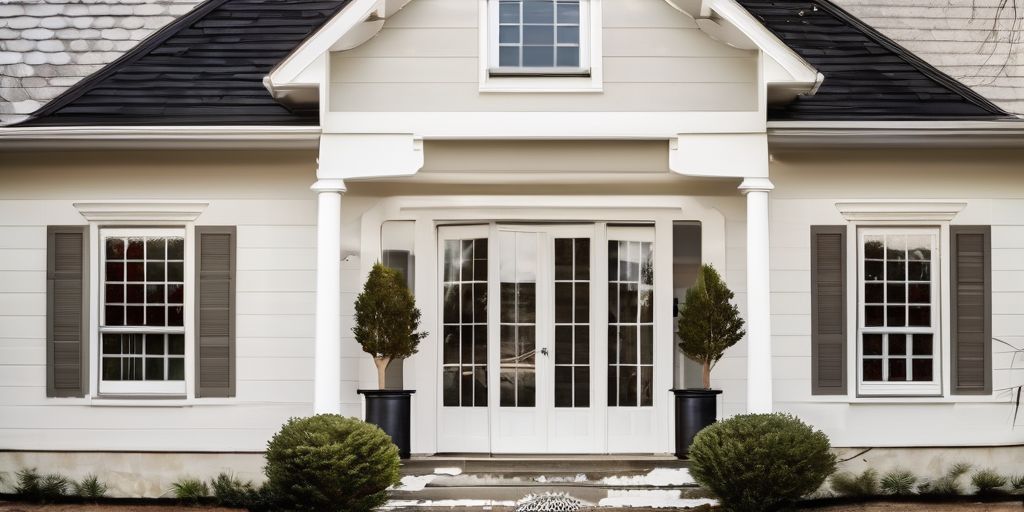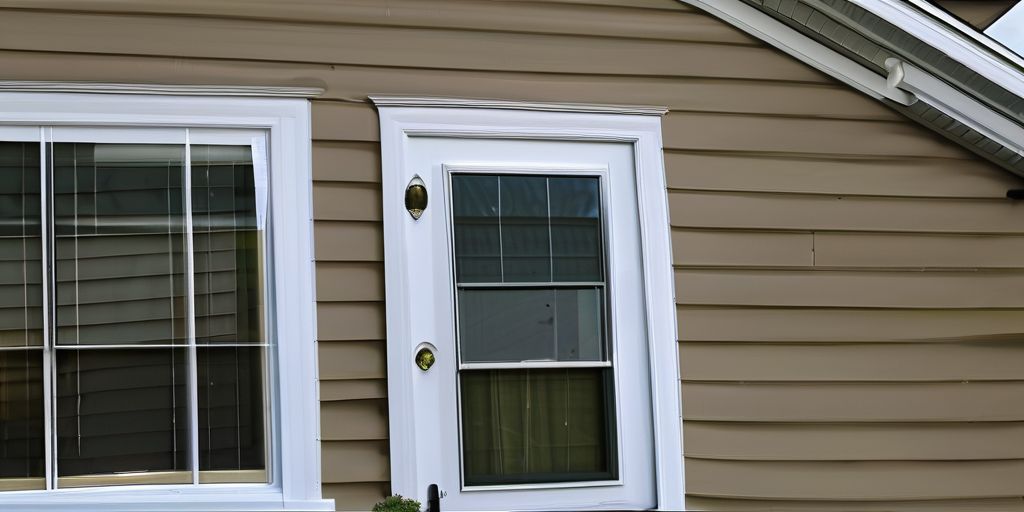Painting vinyl siding is a cost-effective way to refresh the exterior of your home, but it comes with its own set of safety considerations. Whether you’re a seasoned DIY enthusiast or a first-time painter, understanding the essential safety measures can make the difference between a successful project and a hazardous one. This guide will walk you through the necessary precautions to ensure that your vinyl siding painting project is both safe and effective.
Key Takeaways
- Always wear protective clothing, gloves, safety goggles, and masks to safeguard against chemicals and debris.
- Ensure ladder safety by placing it on level ground and using ladder stabilizers or having a spotter for added security.
- Thoroughly clean and dry the vinyl siding before painting to ensure proper paint adhesion and avoid potential hazards.
- Use painter’s tape and plastic sheeting to protect areas you don’t want to paint, reducing the risk of accidental spills and splatters.
- Consider seeking professional help if your project involves working at heights or extensive repairs to ensure safety and a high-quality finish.
Essential Safety Gear for Painting Vinyl Siding
When painting vinyl siding, it’s crucial to prioritize safety by using the right gear. Protect yourself with the following essential items to ensure a safe and efficient painting process.
Preparing Your Work Area for Safety
Clearing the Area
Before you start painting, it’s essential to clear the area around your home. Remove any outdoor furniture, decorations, or other obstacles that could get in the way. This not only makes the job easier but also helps prevent accidents. Protecting areas adjacent to the siding is just as important as prepping the siding itself. Make sure to cover any plants or landscaping features with drop cloths or plastic sheeting to protect them from paint drips or overspray.
Using Painter’s Tape and Plastic Sheeting
Using painter’s tape and plastic sheeting is crucial for a clean and professional-looking paint job. Apply painter’s tape around windows, doors, and trim to keep these areas free from paint. Cover larger areas with plastic sheeting to protect them from drips and overspray. This step is vital for ensuring that only the areas you want to paint get painted.
Setting Up a Safe Ladder
Ladder safety is paramount when painting vinyl siding. Make sure your ladder is in good condition and set it up on a stable, level surface. If possible, have a helper hold the ladder steady while you work. Always follow the manufacturer’s guidelines for ladder use, and never overreach while on the ladder. Timing painting projects for vinyl siding in Hamilton’s seasons is crucial to avoid working in extreme weather conditions, which can make ladder use more dangerous.
Safety should always be your top priority when preparing your work area for painting. Taking the time to set up properly can prevent accidents and ensure a smoother, more efficient painting process.
Cleaning Vinyl Siding Safely
Choosing the Right Cleaning Solution
Creating an effective cleaning solution is essential for preparing your vinyl siding. Mix powdered laundry detergent, household cleaner, and a bit of bleach in water to tackle dirt, mildew, and any grime on your siding. This combination ensures a thorough clean without damaging the material.
Proper Techniques for Cleaning
Hand scrubbing is very effective and may be safer for the siding than pressure washing. If you opt for power washing, check with the vinyl manufacturer’s maintenance instructions first and be careful of the direction in which the pressure washer is aimed. Here are some steps to follow:
- Use a Soft Bristled Brush: Gently scrub the siding with the cleaning solution. A soft brush ensures you don’t damage the vinyl while removing all the unwanted buildup.
- Rinse Thoroughly: After scrubbing, rinse the siding with clean water from a garden hose, ensuring all cleaning solutions and loosened dirt are washed away.
Drying the Siding Completely
After using the cleaning mix, wipe the vinyl siding down with water and allow it to dry. Ensuring the siding is completely dry is crucial before you start painting. This step helps in achieving a smooth and professional finish.
Ensure safe workspace, protect surroundings from paint spills for a professional finish.
Repairing and Inspecting Siding Before Painting
Before you start painting, it’s crucial to ensure your vinyl siding is in good condition. This involves a thorough inspection and making necessary repairs to achieve a smooth, long-lasting finish.
Safe Painting Techniques for Vinyl Siding
Painting vinyl siding requires a specific technique to ensure a smooth, even finish. Start by applying the paint in a vertical direction, following the length of the siding. This helps to prevent streaks and drips, giving a more professional look.
Using the Right Tools
To achieve the best results, use a high-quality brush or roller for the application. A brush is ideal for smaller areas and edges, while a roller can cover larger areas more quickly. For the best results, apply the paint in thin, even layers.
Applying Paint Evenly
Masking Makes Perfect: Use painter’s tape to meticulously mask off trim, windows, doors, and any other areas you don’t want painted. This ensures clean lines and a neat finish. When painting, start from the top and work your way down to avoid drips and runs.
Avoiding Common Mistakes
Beware of Pressure Washing: While tempting, avoid using a pressure washer on your vinyl siding. The high water pressure can damage the siding and create microscopic cracks that compromise paint adhesion. Instead, clean the siding with a gentle solution and a soft brush.
Remember, the key to a successful DIY project is patience and attention to detail. Take your time to prepare and apply the paint correctly for a long-lasting finish.
When to Seek Professional Help
While a DIY approach can be budget-friendly for vinyl siding painting, there are situations where seeking professional help might be wise:
Safety Concerns with Heights
If your vinyl siding is on a multi-story home, or you’re uncomfortable working at heights, hiring professional painters can ensure your safety. Consult professionals for advice on painting practices, especially when dealing with elevated areas.
Handling Extensive Repairs
If your vinyl siding requires significant repairs before painting, professional expertise can save you time and frustration. Begin with a thorough inspection of the surfaces to be painted. Look for signs of damage, such as peeling paint, flaking paint, or bare wood. Addressing these issues promptly can prevent further complications.
Ensuring a Professional Finish
Professional painters can offer expertise, efficiency, and ensure a high-quality finish. They pay attention to details like hardware for a professional finish. This can be particularly important if you want to avoid common pitfalls and achieve a long-lasting result.
DIY vs. Professional Help: Consider your comfort level and skills when deciding between a DIY approach or hiring professional painters. Professional painters can offer expertise, efficiency, and ensure a high-quality finish, but naturally come at a higher cost.
Knowing when to seek professional help can make all the difference in achieving the best results for your home. If you’re unsure about tackling a painting project on your own, don’t hesitate to reach out to us. Our team of experts is ready to provide you with top-tier services and ensure your home looks its best. Visit our website to learn more and book your free estimate today!
Conclusion
Painting your vinyl siding can be a rewarding DIY project that significantly enhances the appearance and value of your home. By following the proper safety measures, such as using painter’s tape to protect areas from paint, thoroughly cleaning the siding, and addressing any necessary repairs, you can achieve a professional-looking finish. Remember, while DIY can be cost-effective, don’t hesitate to seek professional help if the project involves working at heights or extensive repairs. With the right preparation and materials, your vinyl siding will look fresh and vibrant for years to come. Happy painting!
Frequently Asked Questions
What type of paint should I use for vinyl siding?
You should use quality vinyl-safe acrylic paint and vinyl-safe colors. Benjamin Moore offers a good selection of these products.
Is it necessary to use a primer before painting vinyl siding?
Using a vinyl-safe primer is optional but recommended for better paint adhesion and longevity.
How should I prepare my vinyl siding before painting?
Start by cleaning the siding with a pressure washer or soapy water and a soft brush. Rinse thoroughly and allow it to dry completely. Inspect for any damage, make necessary repairs, and sand any rough spots. Use painter’s tape and plastic sheeting to cover areas you don’t want to paint.
What safety gear do I need for painting vinyl siding?
You should wear protective clothing, gloves, safety goggles, and masks. Additionally, ensure you have proper ladder safety equipment if you’re working at heights.
Can I use a pressure washer to clean my vinyl siding?
While you can use a pressure washer, it’s generally advised to use a soft brush and soapy water to avoid damaging the siding and creating microscopic cracks that can affect paint adhesion.
When should I consider hiring a professional for painting vinyl siding?
Consider hiring a professional if you have safety concerns with heights, need to handle extensive repairs, or want to ensure a professional finish.




